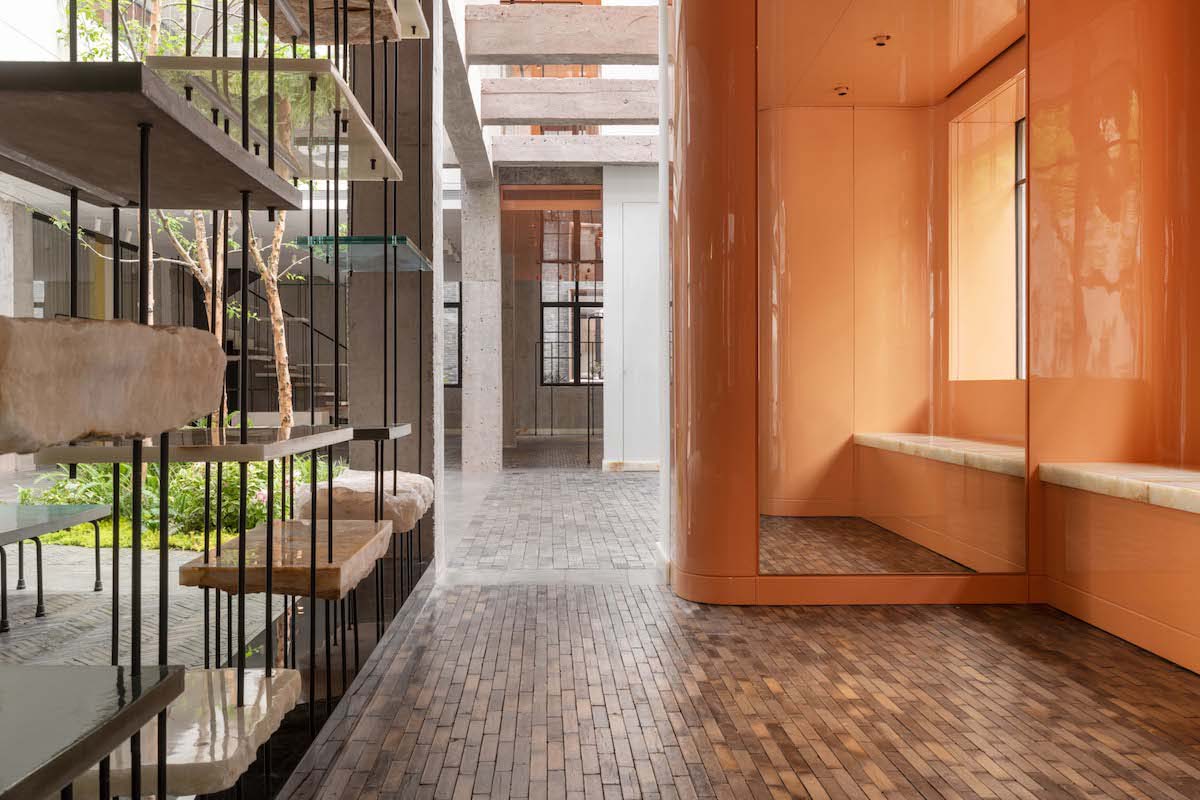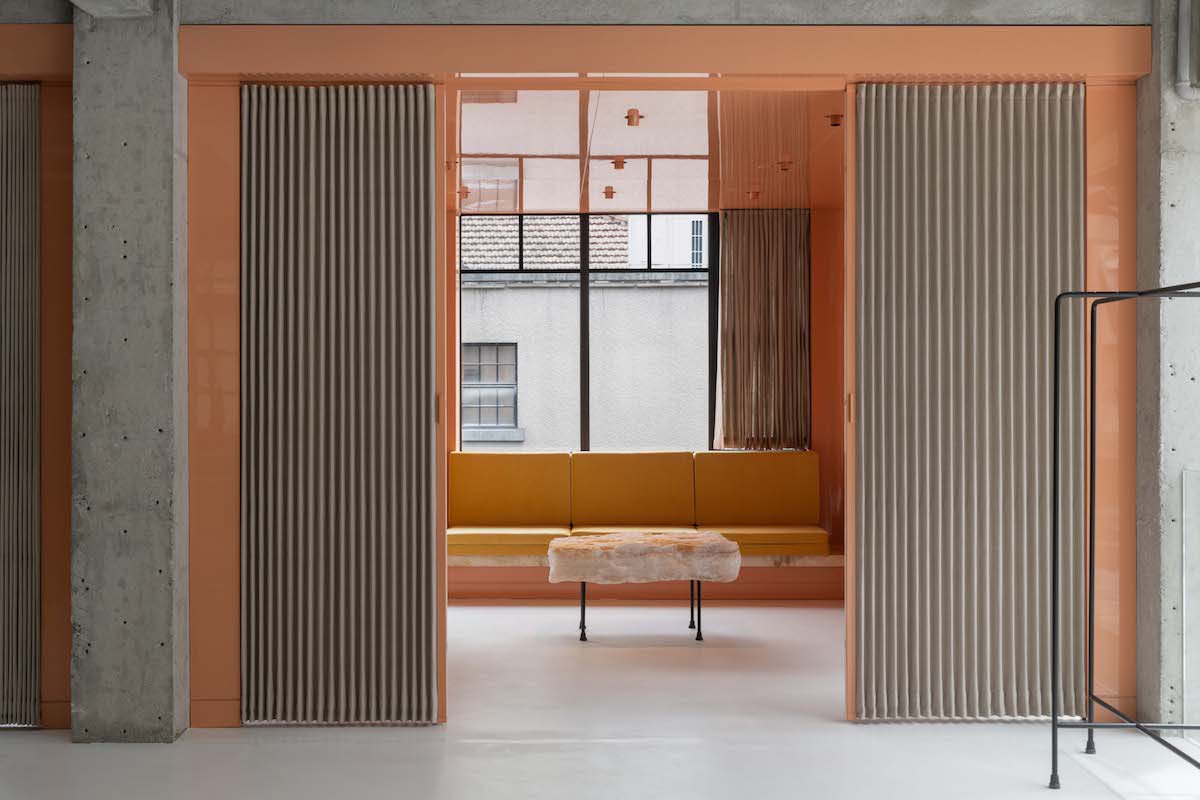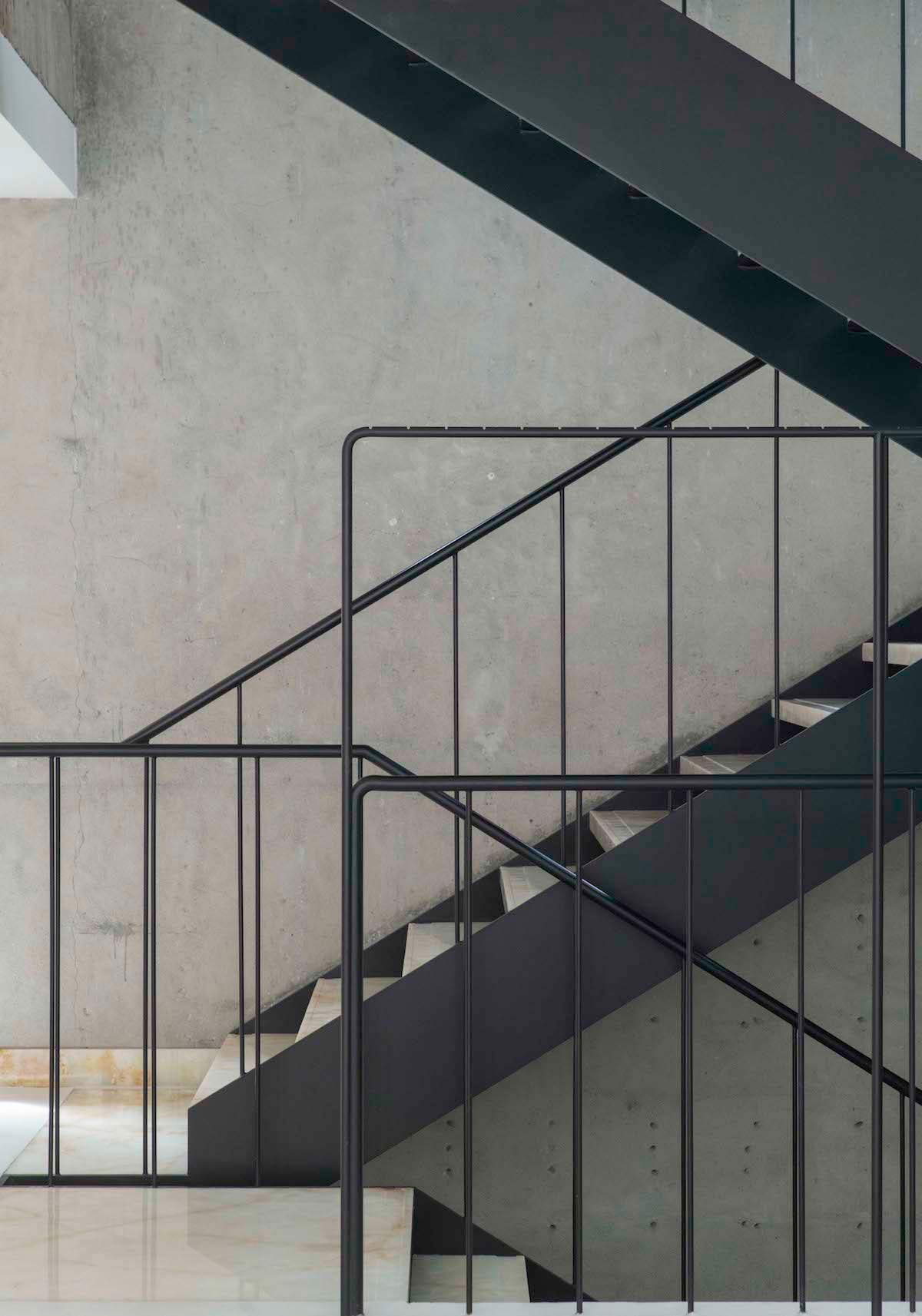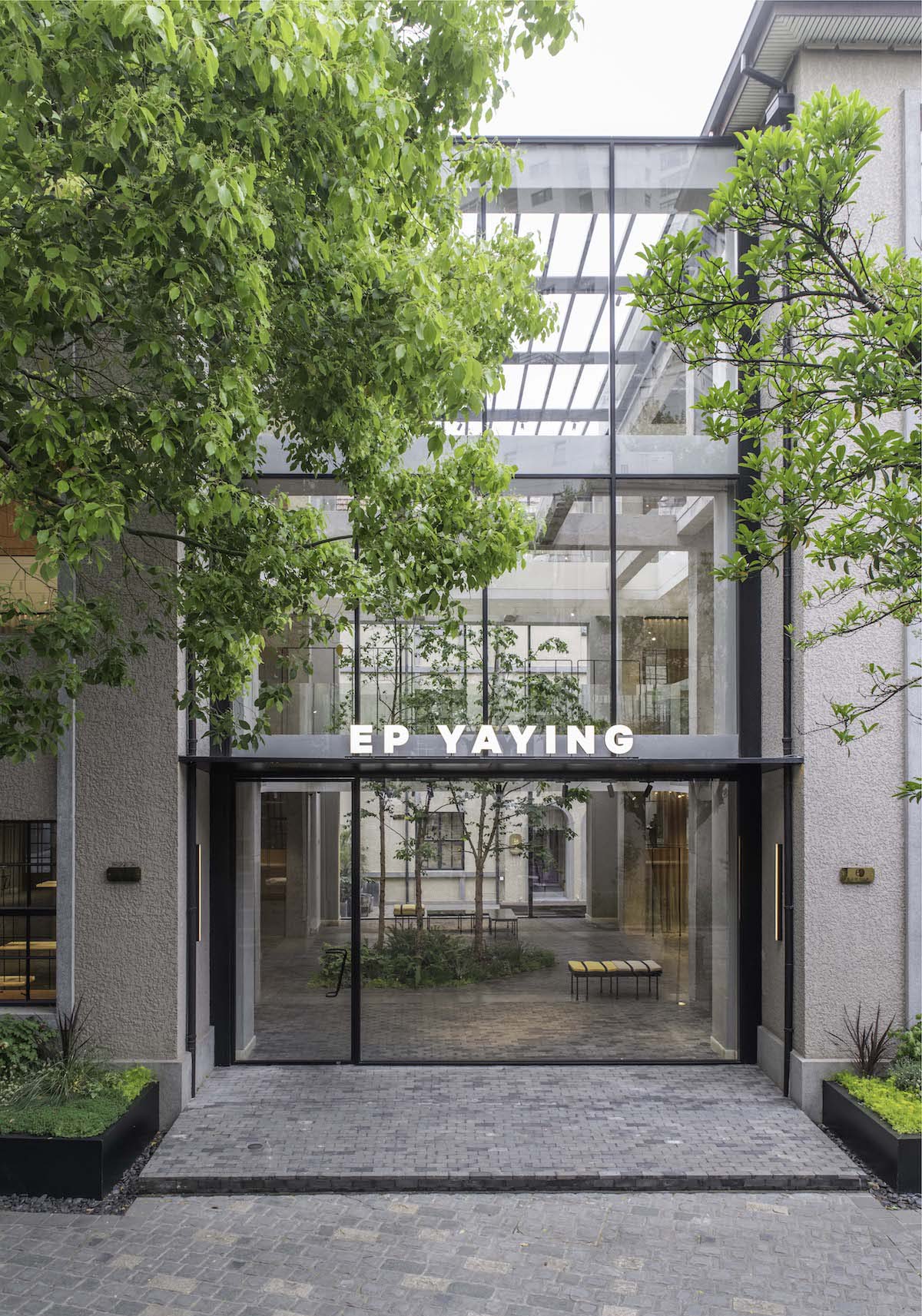Shanghai’s urban fabric is in constant transformation, but every so often one comes across a piece of history. Like Hengshanfang, a group of 11 independent houses with gardens, and two rows of more basic dwellings. A mini-neighborhood built in the late 1930s and early 1940s, now renovated to host creative studios, restaurants, cafés and boutiques.

One of the stores has been opened by the fashion brand EP Yaying (“commitment to quality” in Chinese), in a duo effort of the architect Franklin Azzi together with Serge Ruffieux, creative director of the brand. Together, they have reinterpreted cultural factors and local construction traditions from the standpoint of sophisticated modernity, defining an aesthetic code that blends eastern and western refinement.
The boutique is in one of the independent houses; the garden at its center has become an integral part of the space, a place without a clearly defined function, like an extension of the public space of the city. “We have intentionally gotten away from the traditional idea of the boutique, giving rise to a true identity,” says Azzi.



The store’s architecture relies on transparency, openness to the outside world, the mingling of nature and construction. One of the keys is the use of materials, combined to bring out their best features. A balance of multiple voices: jade and concrete, for rugged beauty, or the stone paving of the internal garden; glossy lacquer and embroidery. Simplicity and decorative richness. Garments and accessories are displayed on a grid of golden metal tubes, containing suspended or supported slabs of stone with different forms and colors (in another game of contrasts).
From floor to ceiling, furniture to fitting rooms conceived as spaces of transition and display, in dialogue with the other spaces, Azzi and Ruffieux have created a voyage composed of aesthetic and sensorial echoes. “We have interfaced maximalism and minimalism,” the architect explains. “The intersection of these two worlds generates an unusual vision, a sort of dualism that sets the tone. We also worked on the spatial sequence, to make this boutique a unique location, different from the other points of sale of the brand.”


The project has been carried out at a distance, for the most part: “We were able to complete the job from Paris, without altering our original vision,” Azzi says. “We were aided by the quality and speed of the Chinese teams who implemented our ideas at the site. Over the last 10 years China has gone through a process of recovery of traditional forms of expertise. This project is proof of that process.”
Photo © Matjaz Tančič









